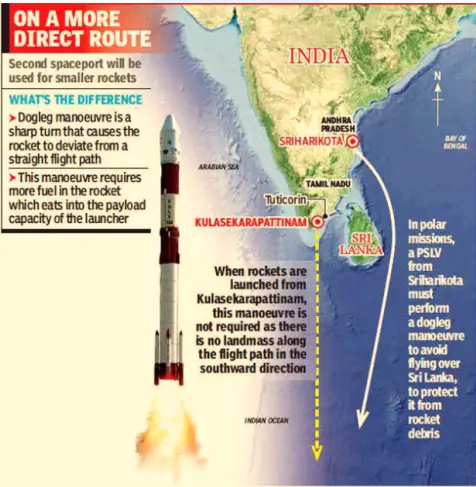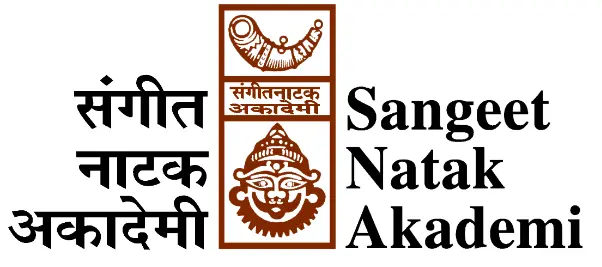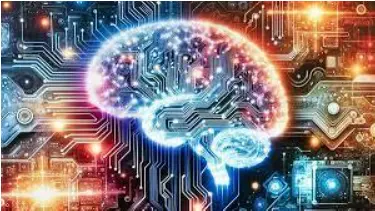Wednesday, 13th March 2024
Local Currency Trade between India-Indonesia
In News: The Reserve Bank of India (RBI) and Bank Indonesia (BI) entered into a Memorandum of Understanding (MoU) to create a framework aimed at encouraging the utilization of domestic currencies, namely the Indian Rupee (INR) and the Indonesian Rupiah (IDR), in cross-border transactions.

Key Highlights of RBI-Bank Indonesia MoU
- Facilitation of Bilateral Transactions
- Aimed at enabling transactions in INR and IDR for current account, capital account, and other economic activities as agreed mutually.
- Development of INR-IDR Foreign Exchange Market
- Allows exporters and importers to transact in domestic currencies, reducing costs and settlement time.
- Expected to nurture an INR-IDR foreign exchange market, promoting trade and financial integration.
- Enhancement of India-Indonesia Relations
- Intended to deepen historical, cultural, and economic ties between the two nations.
Efforts for Internationalisation of the Rupee
- Liberalisation of Capital Markets
- Increased availability of rupee-denominated financial instruments like Masala Bonds and derivatives.
- Promotion of Digital Payment Systems
- Initiatives like Unified Payments Interface (UPI) facilitating digital rupee transactions, adopted by countries like Sri Lanka and Mauritius.
- Special Vostro Rupee Accounts (SVRAs)
- Authorized banks from various countries allowed to open SVRAs for settling payments in rupees, promoting international trade with lower transaction costs and faster settlements.
- Currency Swap Agreements
- RBI's agreements with countries such as Japan and SAARC members enabling exchange of rupee and foreign currency, boosting rupee's international usage.
- Bilateral Trade Agreements
- Signing of bilateral trade agreements promoting cross-border trade and investment, thereby increasing the use of rupee in international transactions.
|
UPSC Previous Year Questions Prelims (2015) Q. Convertibility of rupee implies (a) being able to convert rupee notes into gold Ans: (c) |
Source: BL
Centre notifies CAA rules
In News: The Ministry of Home Affairs (MHA) has issued the Citizenship Amendment Rules, 2024, facilitating the execution of the Citizenship Amendment Act (CAA).
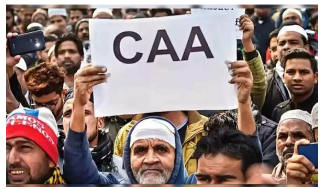
Overview of the Citizenship (Amendment) Act (CAA) 2019
- Amendments and Eligibility
- The CAA aims to amend the Citizenship Act 1955 to grant fast-track Indian citizenship to Hindu, Sikh, Parsi, Buddhist, Jain, and Christian immigrants from Pakistan, Afghanistan, and Bangladesh, excluding Muslims.
- Eligibility criteria include being persecuted on religious grounds and entering India on or before December 31, 2014.
- Exclusions
- The act does not apply to areas under the Constitution's sixth schedule or states with an inner-line permit regime.
- Exclusions raise concerns, particularly in Assam, where it's seen as violating the 1985 Assam Accord.
- Delays and Protests
- The delay in notifying CAA rules is attributed to opposition, especially in Assam and Tripura, over concerns of demographic change.
- Protests spread beyond the Northeast and include legal challenges questioning the law's constitutionality.
Citizenship Amendment Rules, 2024
- Application Process
- Eligible refugees must submit applications with affidavits, proof of entry, and support from an Indian citizen.
- Applications are to be electronically submitted to a district-level committee empowered by the central government.
- Verification and Documentation
- Applicants need to provide various documents, including passports, birth certificates, and proofs of their ancestors' citizenship.
- Verification includes confirming entry before December 31, 2014, through visas, immigration stamps, or other official records.
- Digital Certification and Process Changes
- Approved applicants receive digital certificates.
- Previously, citizenship applications were made to district collectors, but the new rules establish empowered and district-level committees under central government control.
Composition of Empowered Committee
- The empowered committee is led by a director (census operations) and includes officials from intelligence, immigration, and postal services, as well as state government representatives and railway officials.
Source: IE
'Democracy Report 2024'
In News: The V-Dem Institute produces the 'Democracy Report 2024', which monitors democratic freedoms on a global scale.
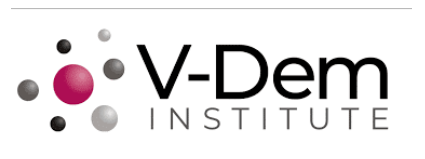
Overview of V-Dem and Democracy Report
- V-Dem Institute
- Founded by Swedish political scientist Staffan Lindberg in 2014.
- Based at the University of Gothenburg, Sweden, focusing on government qualities.
- Publishes high-profile datasets annually, freely available and widely used among political scientists.
- Democracy Report
- Published annually by the V-Dem Institute, focusing on global democracy trends.
- Classifies countries into four regime types based on the Liberal Democratic Index (LDI).
- LDI includes 71 indicators covering liberal and electoral aspects of democracy.
- Components of LDI
- Liberal Component Index (LCI): Measures individual liberties and legislative constraints.
- Electoral Democracy Index (EDI): Ensures free and fair elections.
- Also includes Egalitarian, Participatory, and Deliberative Component Indices.
Key Findings of Democracy Report 2024
- Overall Trends
- Autocratization observed in 42 countries, affecting 35% of the world's population.
- 71% of the global population resides in autocracies, up from 48% a decade ago.
- Democracy levels declined to 1985 levels globally, with sharpest declines in Eastern Europe and South/Central Asia.
- Worst Affected Components
- Freedom of expression, clean elections, and freedom of association/civil society noted as most affected in autocracies.
- Democratic Decline in 2024
- More than half of the 60 countries holding elections in 2024 (31) are experiencing democratic decline.
India's Situation
- Downgraded Status
- India classified as an electoral autocracy since 2018, facing further decline on multiple metrics.
- Current Status
- India identified as one of the worst autocratizers, with levels of liberal democracy dropping to those last seen in 1975.
- Liberal democracy entails robust mechanisms for judicial independence, executive constraints, and protection of civil liberties.
- Electoral Autocracy Definition
- Multiparty elections exist alongside inadequate freedom of expression and fair elections, placing India in this category.
Source: TH
ASI Survey of Bhojshala Complex
In News: The Indore Bench of the Madhya Pradesh High Court has directed the Archaeological Survey of India (ASI) to conduct a scientific survey of the Bhojshala Temple-Kamal Maula Mosque complex in Dhar district to determine its original characteristics.
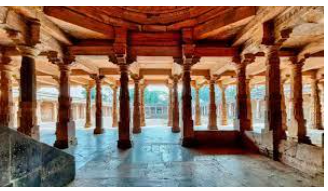
Overview of Bhojshala Temple-Kamal Maula Mosque Complex
- Historical Background
- Originally built as a temple of goddess Sarasvati by Parawara King Bhoja in the 11th Century AD.
- The mosque was constructed using structural elements from the temple, with some inscribed slabs retaining Sanskrit and Prakrit literary works.
- King Bhoja, renowned for his patronage of art and literature, established a school known as Bhojashala.
- Current Arrangement
- Under an agreement with the ASI, Hindus perform puja in the temple every Tuesday, while Muslims offer Namaz every Friday.
- Dispute and Court Order
- Controversy surrounds the original status of the site as a temple.
- A petitioner cites an ASI report alleging the demolition of the original temple to build the mosque, leading to a call for a survey to establish the site's true history.
- The High Court has mandated the ASI to conduct a thorough scientific survey, excavation, and investigation, employing advanced methods like GPR-GPS and carbon dating.
Methods Utilized by ASI for Excavation
- Invasive Methods
- Excavation involves digging to gather information about the past, employing stratigraphic principles.
- Stratigraphy is utilized to understand the logical formation of the archaeological record.
- Non-Invasive Methods
- Used when excavation is not feasible, particularly inside built structures.
- Active methods inject energy into the ground and measure the response, while passive methods measure existing physical properties.
- Techniques include seismic methods, electromagnetic methods, magnetometry, gravity surveying, and Ground-Penetrating Radar (GPR).
- Ground-Penetrating Radar (GPR)
- Produces a 3-D model of buried archaeological features by introducing radar impulses into the ground and recording return signals.
- Beam spreads may lead to reflections not directly corresponding to physical dimensions, creating false images.
- Carbon Dating
- Determines the age of organic material by measuring carbon content (C-14).
Limitations of Various Methods in Archaeological Surveys
- Similar physical properties of materials can generate ambiguous responses, leading to difficulty in target identification.
- Data collection is limited and prone to measurement errors, challenging accurate spatial estimation.
- Archaeological structures often consist of heterogeneous materials with complex geometry, complicating data interpretation.
- Geophysical tools may struggle to accurately reconstruct target images, especially in complex scenarios.
- Emotional and political factors can influence interpretations and decisions, particularly in disputes over religious sites.
Source: TH
Election Commission of India
In News: Just days before the announcement of the Lok Sabha elections, the Election Commissioner of India stepped down from his position.
Overview of the Election Commission of India (ECI)
- Establishment and Responsibilities
- The Election Commission of India (ECI) is an independent constitutional authority tasked with overseeing Union and State election processes.
- Established on January 25, 1950, as per constitutional provisions, with its secretariat in New Delhi.
- Manages elections for the Lok Sabha, Rajya Sabha, State Legislative Assemblies, and the offices of the President and Vice President.
- Constitutional Provisions
- Part XV (Article 324-329) of the Constitution deals with elections and establishes the commission.
- Article 324 vests the superintendence, direction, and control of elections in the Election Commission.
- Structure of ECI
- Initially comprised a single election commissioner but was transformed into a multi-member body after the Election Commissioner Amendment Act 1989.
- Currently consists of the Chief Election Commissioner (CEC) and two Election Commissioners (ECs).
- Assisted at the state level by the Chief Electoral Officer.
- Appointment & Tenure of Commissioners
- Appointed by the President as per the CEC and Other ECs (Appointment, Conditions of Service and Term of Office) Act, 2023.
- Hold a fixed tenure of six years or until the age of 65, whichever is earlier.
- Salaries and conditions of service are equivalent to those of the Cabinet Secretary.
- Removal
- Commissioners can resign at any time or be removed before their term's expiry.
- Removal process for CEC resembles that of a Supreme Court judge, while ECs can be removed on the CEC's recommendation.
- Limitations
- Qualifications of ECI members, their term limits, and post-retirement appointments are not specified by the Constitution.
|
UPSC Previous Year Questions Prelims (2017) Q. Consider the following statements:
Which of the statements given above is/are correct? (a) 1 and 2 only Ans: (d) Mains (2022) Q. Discuss the role of the Election Commission of India in the light of the evolution of the Model Code of Conduct. |
Source: IE
Sea Defenders-2024
In News: The maritime security drill 'Sea Defenders-2024' took place between the Indian Coast Guard (ICG) and the United States Coast Guard (USCG) in Port Blair, Andaman and Nicobar Islands.
Maritime Exercise Highlights
- Pollution Response Demonstration
- Indian Coast Guard vessels and aircraft demonstrated their proficiency in addressing oil spills and other environmental threats at sea.
- Showcase of expertise in handling pollution incidents to safeguard marine ecosystems.
- Visit Board Search and Seizure (VBSS) Operations Simulation
- Simulated exercises involving inspection of vessels suspected of engaging in illegal activities.
- Demonstrated coordination and efficiency in conducting maritime law enforcement operations.
- Firefighting and Damage Control Training
- Personnel from both coast guards refined their skills in firefighting and damage control.
- Emphasis on enhancing preparedness for emergencies and promoting mutual cooperation.
- Fostering Collaboration and Camaraderie
- The joint exercise provided a platform for coast guard personnel to collaborate and strengthen their bonds.
- Opportunity to build camaraderie and mutual trust among participants.
Source: PIB
Bureau of Indian Standards
In News: The Government of India has recently launched a scheme via the Bureau of Indian Standards (BIS) aimed at enhancing and fortifying the laboratory network across the nation.
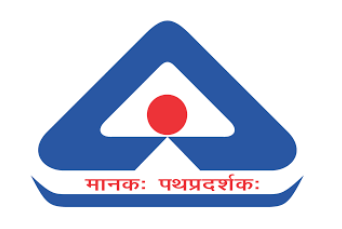
Overview of Bureau of Indian Standards (BIS)
- BIS is India's National Standard Body established under the BIS Act 2016.
- Mandated with activities related to standardization, marking, and quality certification of goods.
- Establishment and Mandate
- BIS succeeded the Indian Standards Institution (ISI), founded in 1947 to ensure quality control and competitive efficiency in India's early industrialization phase.
- Successor of Indian Standards Institution (ISI)
- Functioning under the Ministry of Consumer Affairs, Food and Public Distribution.
- Administrative Control
- Contributions to the National Economy
- Provides traceability and tangibility benefits to the economy by ensuring safe, reliable quality goods.
- Minimizes health hazards to consumers, promotes exports, and substitutes imports through standardization, certification, and testing.
- Product Certification Schemes
- Operates product certification schemes covering various industrial disciplines, including agriculture, textiles, and electronics.
- Certification is mandatory for products directly impacting public health and safety, such as milk powder, X-ray equipment, and gas cylinders.
- Certification Processes
- Offers mandatory certification for certain products and permits voluntary or self-certification in other cases.
- Expert Staff and Testing Facilities
- Employs engineers, scientists, and statisticians for certification processes.
- Conducts testing in its own laboratories and independent facilities, adhering to ISO laboratory guidelines.
- Headquarters and Regional Presence
- Headquartered in New Delhi with regional and branch offices across the country.
Source: PIB
Minimum Alternate Tax
In News: The Mumbai bench of the Income Tax Appellate Tribunal (ITAT) recently stated that the taxpayer had the right to seek credit for Minimum Alternate Tax (MAT) under the Vivad se Vishwas (VSV) Scheme for the relevant year.
About Minimum Alternate Tax
- Minimum Alternate Tax (MAT) is a provision outlined in the Income Tax Act of India, primarily targeting companies.
- It ensures that companies with significant book profits but paying minimal or no income tax due to exemptions and deductions face a minimum level of taxation.
- MAT aims to counter tax avoidance by companies that manipulate financial statements to artificially reduce taxable income.
- Under MAT, companies are required to pay a fixed percentage of their profits.
- This tax regulation applies to all companies, including foreign ones, except those exempted under Section 10AA for Special Economic Zones (SEZs).
- MAT calculations are governed by Section 115JB of the Income-tax Act.
- Companies must pay tax based on whichever amount is higher between their normal tax liability and MAT.
- Normal Tax Liability is computed according to regular income tax laws, while MAT is calculated at 15% (previously 18.5%) on book profit plus cess and surcharge.
- Book profits, on which MAT is applied, differ from taxable profits calculated under standard provisions of the Income Tax Act.
- MAT Credit refers to the difference between MAT and normal tax liability when MAT exceeds the latter for a company.
Source: TS
Anthropocene Epoch - Edukemy Current Affairs
In News: Scientists have rejected a proposal to designate a new geological epoch known as the Anthropocene, which would signify the significant impact of human activity on Earth's systems.

Understanding the Anthropocene Epoch
- Definition: The Anthropocene Epoch is an informal unit of geologic time that marks the period in Earth's history when human activities began significantly impacting the planet's climate and ecosystems.
- Origin of the Term: The term "Anthropocene" is derived from the Greek words "anthropo" meaning "man" and "cene" meaning "new." It was coined and popularized by biologist Eugene Stormer and chemist Paul Crutzen in 2000.
- Associated Phenomena: Numerous phenomena characterize the Anthropocene, including global warming, sea-level rise, ocean acidification, mass-scale soil erosion, deadly heat waves, biosphere deterioration, and other adverse environmental changes.
- Geological Time Scale: Earth's history is divided into smaller units known as the geologic time scale, including eons, eras, periods, epochs, and ages. These divisions are based on rock layers and fossils found within them, studied through stratigraphy.
- Current Epoch: The current officially recognized epoch is the Holocene, which began 11,700 years ago after the last major ice age.
- Debate: There is ongoing scientific debate regarding whether the Anthropocene represents a distinct epoch from the Holocene. The term has not been formally adopted by the International Union of Geological Sciences (IUGS), the organization responsible for naming and defining epochs. The key question for the IUGS is whether human-induced changes to Earth's systems are evident in the rock strata.
Source: CNN
INS Tushil
In News: Recently, INS Tushil, India's newest naval asset, commenced its sea trials from the Baltiysk naval base in Russia.
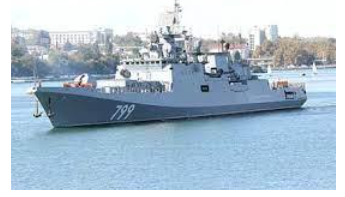
About INS Tushil and Project 11356M
- INS Tushil Overview
- INS Tushil is the inaugural Krivak-III frigate procured under Project 11356M.
- Project 11356M involves the acquisition of four additional Admiral Grigorovich-class frigates.
- Project 11356M Details
- In October 2016, India signed an Inter-Governmental Agreement (IGA) with Russia for the construction/purchase of four Admiral Grigorovich-class frigates (Project 11356M).
- Russia will supply two frigates, including INS Tushil and INS Tamala, while the remaining two will be built in India.
- These frigates, also known as Talwar-class frigates or Project 11356, are stealth-guided missile frigates.
- The IGA entails Russian technical assistance in establishing production for the 11356 project frigates in India.
- Features of INS Tushil
- Incorporates stealth technology for reduced radar and underwater noise signatures.
- Equipped with Indian-supplied systems like surface-to-surface missiles, sonar, radar, communication suites, and anti-submarine warfare systems.
- Also outfitted with Russian surface-to-air missiles and gun mounts.
- Designed to engage submarines and surface vessels in various water conditions and counter air threats.
- Technical Specifications
- Displacement: 3620 tons.
- Length: 124.8 meters.
- Maximum Speed: 30 knots.
- Cruising Range: 4850 miles.
Source: RW
Harmonizing AYUSH with Modern Medicine
In News: The article highlights the importance of fostering collaboration between modern medicine and AYUSH practitioners, advocating for a transition towards integrated medicine to enhance patient care.
Hybrid Models of Integrating Modern and AYUSH Medicines
- Competitive Model
- In this scenario, modern and AYUSH systems compete, leading to rivalry and name-calling.
- Professional associations may engage in litigation, each system highlighting its strengths over the other.
- Competition centers around effectiveness, side-effects, and commercial aspects.
- Coexistence Model
- Both systems acknowledge each other's legitimacy and maintain clear boundaries.
- Patients decide whether to pursue AYUSH treatment alongside modern medicine.
- Practitioners may co-locate but typically do not refer patients to each other.
- Cooperation Model
- Ideal integration where both systems collaborate for optimal patient care.
- Recognition of strengths from each system and joint effort towards treatment.
- Enhances preventive healthcare, complementing modern medicine's disease-centered approach.
Challenges in Adopting Hybrid Models
- Trust Deficit Between Groups
- Instances of patients worsening or improving with alternative treatments fuel mistrust.
- Claims of effective cures without sufficient evidence exacerbate the issue.
- Technical Challenges
- AYUSH's heterogeneity requires distinct considerations for each discipline.
- Integration of dosha-based Ayurvedic management with standard protocols poses challenges.
- Operational Challenges
- Team-based approach requires understanding of each system's strengths and limitations.
- Lack of knowledge among modern practitioners about AYUSH complicates decision-making.
- Regulatory Challenges
- Weak enforcement of regulations regarding cross-practice prescriptions.
- Professional councils struggle to ensure accountability and adherence to guidelines.
Suggestions for Integrating Modern and AYUSH Medicines
- Enhancing Evidence Base
- Improve evidence for AYUSH treatments to build trust and weed out ineffective practices.
- Develop composite treatment guidelines based on robust evidence from both systems.
- Teaching Cross-Modal Concepts
- Consider integrating AYUSH subjects into modern medical education, albeit without increasing curriculum burden excessively.
- Establishing optional or non-examinable modules may encourage learning without overwhelming students.
- Implementing Regulatory Framework
- Establish clear guidelines for collaboration, communication, and referral between practitioners.
- Address regulatory issues related to insurance, quality standards, and health technology assessment.
- Integrating Practices in National Ayush Mission (NAM)
- Merge modern medicine practices into NAM to leverage holistic healthcare approaches.
- Emphasize preventive healthcare and widen treatment options for patients.
Conclusion
Integrating modern and AYUSH medicines offers substantial benefits for healthcare delivery. While competitive models foster rivalry, cooperation models present challenges such as trust deficit and regulatory complexities. Addressing evidence gaps, establishing regulatory frameworks, and promoting cross-disciplinary education can facilitate a more integrated and effective healthcare system.
|
UPSC Previous Year Questions Mains (2019) Q. How is the Government of India protecting traditional knowledge of medicine from patenting by pharmaceutical companies? |
Source: IE
Share the article
Edukemy’s Current Affairs Quiz is published with multiple choice questions for UPSC exams
MCQ
Get Latest Updates on Offers, Event dates, and free Mentorship sessions.

Get in touch with our Expert Academic Counsellors 👋
FAQs
UPSC Daily Current Affairs focuses on learning current events on a daily basis. An aspirant needs to study regular and updated information about current events, news, and relevant topics that are important for UPSC aspirants. It covers national and international affairs, government policies, socio-economic issues, science and technology advancements, and more.
UPSC Daily Current Affairs provides aspirants with a concise and comprehensive overview of the latest happenings and developments across various fields. It helps aspirants stay updated with current affairs and provides them with valuable insights and analysis, which are essential for answering questions in the UPSC examinations. It enhances their knowledge, analytical skills, and ability to connect current affairs with the UPSC syllabus.
UPSC Daily Current Affairs covers a wide range of topics, including politics, economics, science and technology, environment, social issues, governance, international relations, and more. It offers news summaries, in-depth analyses, editorials, opinion pieces, and relevant study materials. It also provides practice questions and quizzes to help aspirants test their understanding of current affairs.
Edukemy's UPSC Daily Current Affairs can be accessed through:
- UPSC Daily Current Affairs can be accessed through Current Affairs tab at the top of the Main Page of Edukemy.
- Edukemy Mobile app: The Daily Current Affairs can also be access through Edukemy Mobile App.
- Social media: Follow Edukemy’s official social media accounts or pages that provide UPSC Daily Current Affairs updates, including Facebook, Twitter, or Telegram channels.

